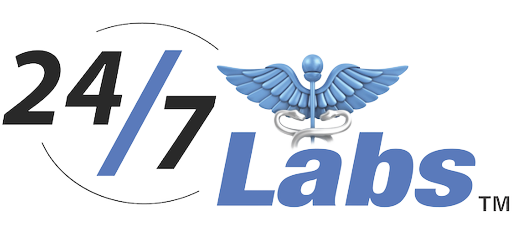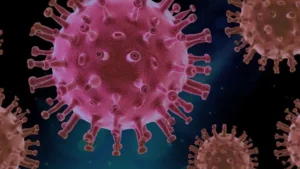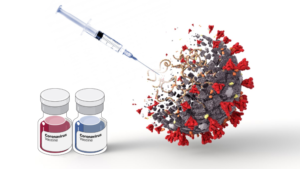What is vertigo?
It is a condition of hallucination of environment or self-movement. We can say the common word dizziness for different feelings of such a condition. Maybe you are very familiar with the condition of dizziness yet difficult to describe. This condition is may be noticeable and so severe that it becomes very difficult to balance yourself and do any task. Vertigo attacks can develop suddenly and can last for much longer or for few seconds.
Types of Vertigo
There are two main types of vertigo.
Peripheral Vertigo- In peripheral vertigo, there is a problem in the inner ear or the vestibular nerve, which connects the inner ear and the brain due to which peripheral vertigo is caused.
Central Vertigo- This condition happens when there is a glitch in the cerebellum.
Symptoms
Vertigo is a symptom itself but it can lead to occur many other symptoms.
Symptoms of peripheral vertigo
- The problem is balancing the body
- Lightheadedness
- A sense of motion sickness
- Nausea
- Vomiting
- Ringing in the ear (tinnitus)
- Also, a feeling of fullness in the ear
- Headaches
- Sweating
- In addition, a problem in concentrating
Symptoms of central vertigo
- Double Vision
- Difficulty in swallowing
- Facial paralysis
- Eyes move uncontrollably or difficulty in movement of eyes (nystagmus)
- Slurred speech
- Weak limbs
Causes of vertigo
Either an imbalance in the inner ear or a problem with the CNS (CEntral nervous system) can lead to Vertigo. Here are some other conditions which may lead to vertigo.
Labyrinthitis- When an infection causes inflammation in the inner ear Labyrinth, a disorder happens called labyrinthitis. Apart from dizziness, a person with labyrinthitis may experience hearing loss, headaches, ear pain, and vision changes.
Vestibular neuritis- Inflammation of vestibular nerve is called vestibular neuritis. It is similar to labyrinthitis but does not affect hearing. Other symptoms include blurred vision, severe nausea, or a feeling of being off-balance.
Cholesteatoma- This is a noncancerous skin growth that develops in the middle ear, usually due to repeated infection. As it grows rapidly it can damage the middle ear’s bony structure, which leads to hearing loss or dizziness.
Benign paroxysmal positional vertigo (BPPV)- There are some organs present in the inner ear called otolith organs which contain fluid and particles of crystals of calcium carbonate. These crystals become dislodged and fall into the semicircular canals in BPPV. Due to the fall crystals touch sensory hair cells of the semicircular canals during movement. Because of this brain receives inaccurate information about a person’s position and dizziness occurs.
Other factors- Rather than these all factors vertigo occurs with some other factors also such as-
- Migraine headaches
- A head injury
- Ear surgery
- Syphilis
- Ataxia, due to which muscle becomes weak
- Cerebellar or brain stem disease
- Also, multiple sclerosis
Diagnosis
If your doctor may immediately order an MRI or CT Scan If he or she suspects a stroke, is older, or has dizziness to the head. During this, your doctor will check how you are walking, maintaining your balance, and how the nerves of your Central Nervous System are working.
The doctor may also prescribe a hearing and balance test for such as
Eye movement testing- In this test when you are watching a moving object your doctor will observe the path of your eyes. You may have to give an eye motion test in which water or air is placed in your ear canal.
Head movement testing- Your doctor will do a simple head movement test called the Dix-Heelpike maneuver to verify the diagnosis of paroxysmal positional vertigo.
Posturography- So, in this test, you have to stand with your bare feet on the platform and have to keep your balance under different conditions. This test will also ensure you doctor about Which part of your balance system is giving you problems.
Rotary Chair testing- In this test, you have to sit in a computer-controlled chair that moves in 360 direction very slowly.
Treatment
1. Medications
Water pills- Water pills are prescribed by your doctor if you have Meniere’s disease. Additionally to this low salt diet helps you to reduce dizziness.
Medications that relieve dizziness and nausea- Many drugs are prescribed by your doctor to provide immediate relief from vertigo, dizziness, and nausea. Many of these drugs cause drowsiness.
Preventive medicine for migraine- Many medicines are prescribed to prevent migraine attacks.
2. Therapy
Balance Therapy- In this therapy, you have to learn many exercises to make your balance and system less sensitive to motion.
Psychotherapy- This therapy helps those people whose dizziness is caused by anxiety disorders.
3. Surgical
Injections- So, your doctor injects antibiotic gentamicin into your inner ear to disable the balance function.
Removal of the inner ear sense organ- In this type of surgical method, it disables the vestibular labyrinth in the affected ear.
Dizziness is a very common complaint and is related to many diseases. It is a sensation of spinning of environment or oneself. True vertigo is a rotary sensation of the patient or the surrounding. Vertigo may also result in severe damage to the ear or disease related to the Central nervous system. So, the signs and symptoms of vertigo include lightheadedness, a sense of motion sickness, nausea, vomiting, ringing in the ear (tinnitus), a feeling of fullness in the ear, headaches, and sweating. However, most causes of vertigo are non-life-threatening and peripheral.



